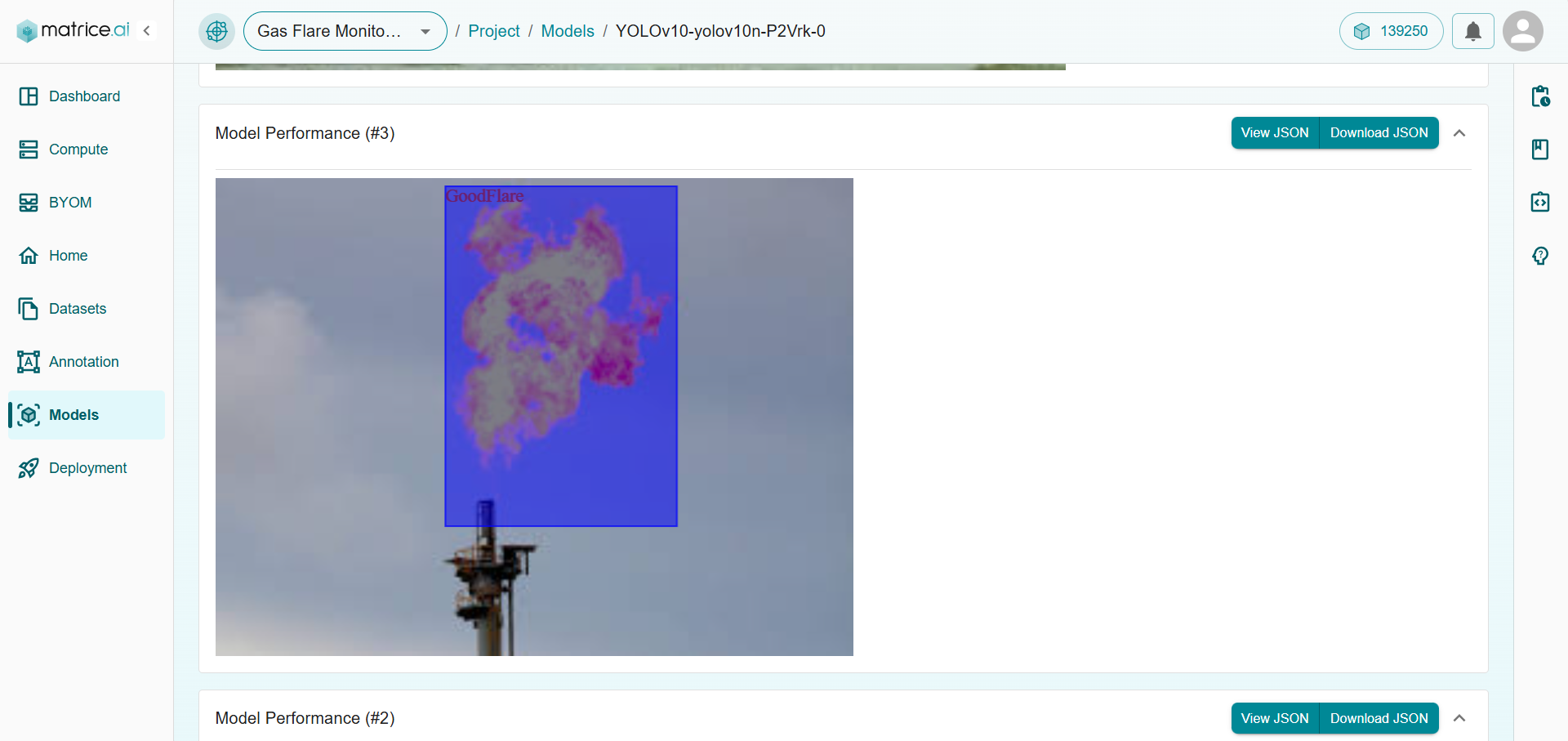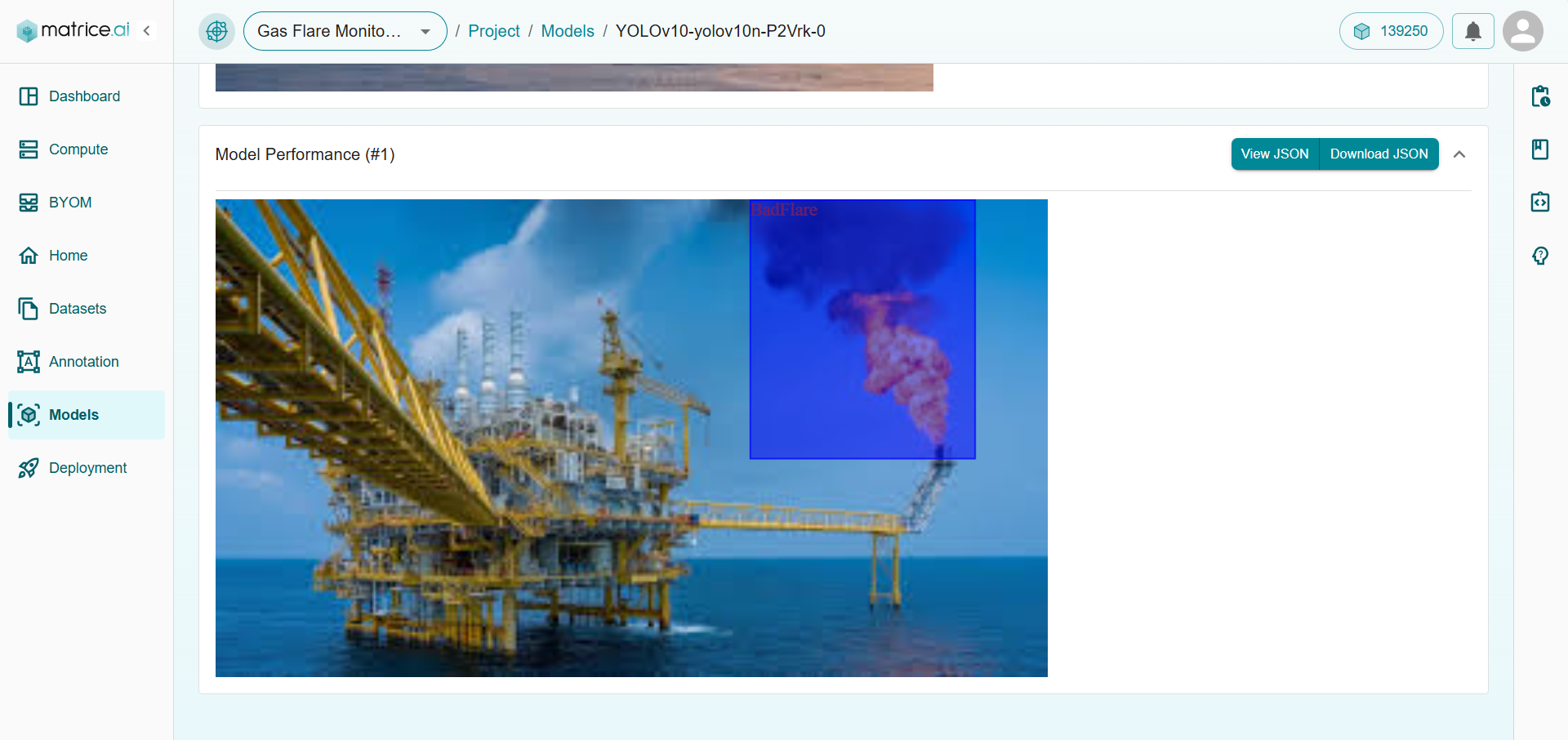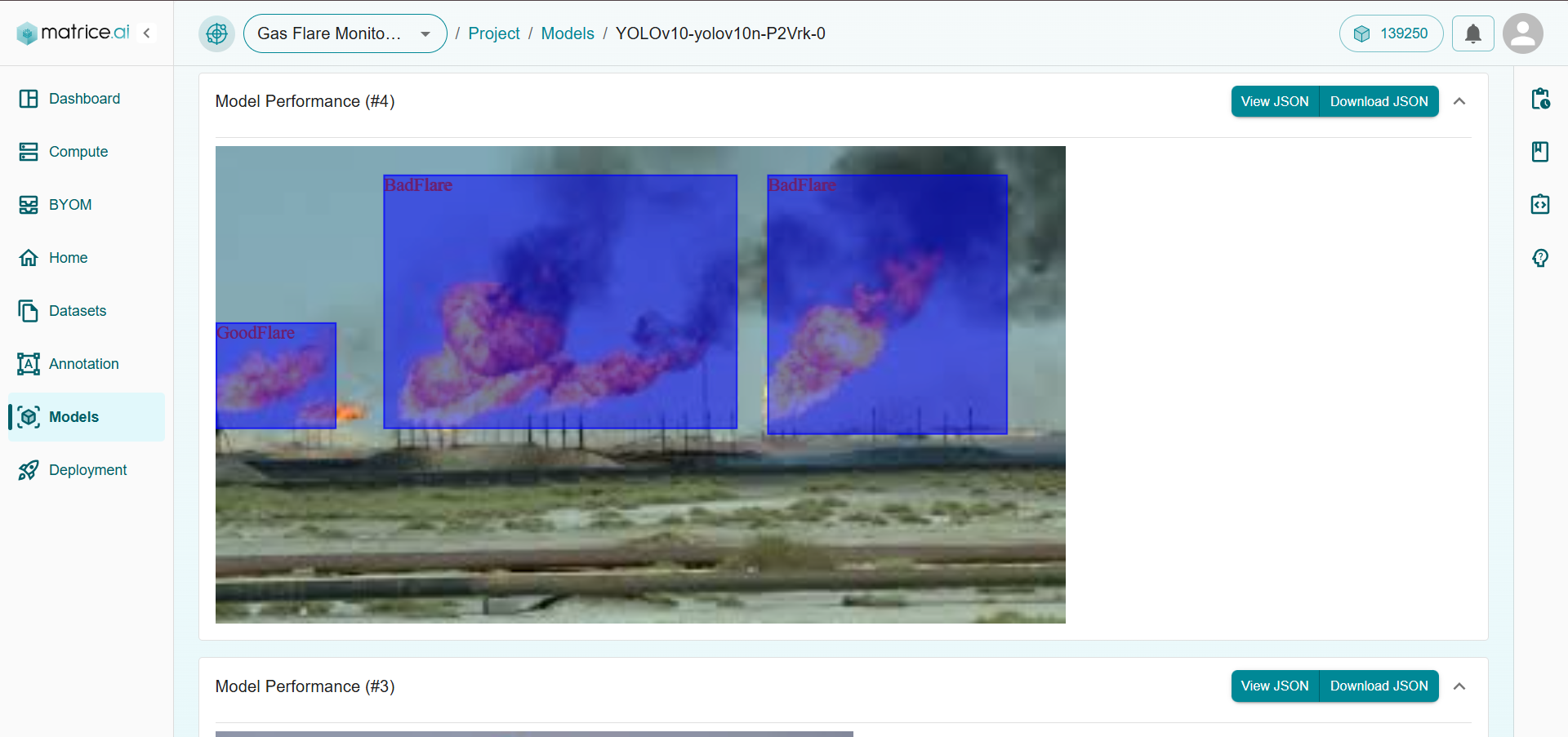Gas Flare Detection: Advancing Environmental Monitoring with Computer Vision
Feb 13, 2025
Gas flare monitoring is a crucial component in industrial operations, particularly in oil and gas facilities, where proper combustion efficiency directly impacts both environmental compliance and operational safety. Traditional monitoring methods often rely on manual inspection or basic sensors, but with advancements in artificial intelligence (AI) and computer vision, automated gas flare detection systems are revolutionizing this process.
This blog explores the importance of gas flare detection, the implementation of AI technology for this use case, and its environmental and operational benefits.
1. Why Gas Flare Detection Matters
Gas flare monitoring is essential for environmental compliance and operational efficiency. Key aspects include:
Environmental Impact: Inefficient flaring leads to increased greenhouse gas emissions and air pollution
Regulatory Compliance: Many jurisdictions require continuous monitoring and reporting of flare efficiency
Operational Safety: Proper flare operation is crucial for facility safety and prevention of hazardous conditions
Economic Considerations: Efficient flaring ensures better resource utilization and reduces waste
The ability to distinguish between “good” flares (complete combustion with minimal smoke) and “bad” flares (incomplete combustion with visible smoke) is crucial for maintaining optimal operations.
2. Benefits of AI in Gas Flare Detection
AI-powered flare detection systems offer several advantages:
Real-time Monitoring: Continuous assessment of flare quality allows for immediate response to inefficient combustion
Objective Classification: Automated systems provide consistent classification of flare quality, eliminating subjective human interpretation
24/7 Operation: AI systems can monitor flares continuously, regardless of lighting conditions or weather
Data Analytics: Historical tracking of flare performance enables trend analysis and predictive maintenance
Remote Monitoring: Enables centralized monitoring of multiple flare stacks across different locations
3. Implementing Gas Flare Detection with RT-DETRx
Dataset Preparation
The dataset consists of annotated images of gas flares captured under various operating conditions and environmental factors. Key characteristics include:
Balanced representation of “good” and “bad” flares
Images captured at different times of day and weather conditions
Various flare sizes and intensities
Multiple viewing angles and distances
High-resolution imagery to capture smoke patterns
Model Architecture
The RT-DETRx (Real-Time DEtection TRansformer) model was chosen for its:
Superior real-time performance
Ability to handle varying scales of objects
Robust feature extraction capabilities
Efficient processing of temporal information
Training Parameters
The model was trained using the following configuration:
Parameter |
Value |
Description |
|---|---|---|
Base Model |
RT-DETRx |
Real-time variant of DETR architecture |
Batch Size |
16 |
Balanced for training stability and speed |
Learning Rate |
0.0001 |
Conservative rate for stable convergence |
Epochs |
80 |
Extended training for optimal performance |
Optimizer |
AdamW |
Adaptive optimizer with weight decay |
Model Evaluation
Validation Results:
Metric |
All Categories |
Good Flares |
Bad Flares |
|---|---|---|---|
Precision |
0.985 |
0.982 |
0.978 |
Recall |
0.973 |
0.961 |
0.985 |
F1 Score |
- |
0.946 |
0.931 |
AP/mAP |
- |
0.912 |
0.895 |
mAP50 |
0.965 |
- |
- |
mAP50-95 |
0.928 |
- |
- |
Inference Time |
45ms |
- |
- |
Test Results:
Metric |
All Categories |
Good Flares |
Bad Flares |
|---|---|---|---|
Precision |
0.938 |
0.945 |
0.931 |
Recall |
0.929 |
0.937 |
0.921 |
F1 Score |
- |
0.941 |
0.926 |
AP/mAP |
- |
0.905 |
0.888 |
mAP50 |
0.918 |
- |
- |
mAP50-95 |
0.859 |
- |
- |
Inference Time |
45ms |
- |
- |
Model Inference Examples
 Example of good flare detection showing complete combustion with minimal smoke
Example of good flare detection showing complete combustion with minimal smoke
 Detection of bad flare with visible smoke plume
Detection of bad flare with visible smoke plume
 Multiple flare detection in complex industrial setting
Multiple flare detection in complex industrial setting
Deployment Strategy
The deployment process includes:
Edge Processing: Models deployed directly on site for real-time processing
Alert System: Immediate notification when bad flares are detected
Data Integration: Connection with existing SCADA systems
Visualization: Real-time dashboard for monitoring flare status
Data Storage: Secure cloud storage for historical analysis
4. Real-World Applications and Impact
The system has been successfully implemented across various industrial scenarios:
Offshore Oil & Gas Platforms
Remote Monitoring: Continuous monitoring of flares in hard-to-access locations
Weather Resilience: Reliable detection in challenging offshore conditions
Integrated Operations: Connection with platform control systems for automated adjustments
Environmental Compliance: Real-time reporting for regulatory requirements
Refineries and Processing Plants
Multi-Stack Monitoring: Simultaneous monitoring of multiple flare stacks
Process Optimization: Real-time feedback for combustion efficiency
Emergency Response: Quick detection of abnormal flaring events
Maintenance Planning: Data-driven scheduling of maintenance activities
Environmental Protection
Emissions Tracking: Accurate measurement of flaring events and emissions
Pollution Prevention: Early detection of incomplete combustion
Community Protection: Monitoring impact on surrounding areas
Carbon Footprint: Supporting carbon reduction initiatives
Industrial Safety
Hazard Prevention: Early warning of dangerous flaring conditions
Worker Safety: Reduced need for manual inspections
Emergency Management: Better response to critical situations
Training: Use of historical data for operator training
Smart Cities and Industrial Zones
Air Quality Management: Integration with urban air quality monitoring
Industrial Park Management: Coordinated monitoring of multiple facilities
Public Safety: Alert systems for nearby communities
Urban Planning: Data support for industrial zone development
5. Future Developments
Ongoing improvements focus on:
Integration of thermal imaging for enhanced night operations
Machine learning models for predictive maintenance
Advanced analytics for emissions quantification
Multi-stack correlation analysis
Integration with drone-based inspection systems
Development of mobile monitoring solutions
Conclusion
AI-powered gas flare detection represents a significant advancement in industrial monitoring capabilities. By providing accurate, real-time classification of flare quality, these systems enable better environmental compliance, improved operational efficiency, and enhanced safety measures. The successful implementation across various industrial settings demonstrates its versatility and effectiveness. As technology continues to evolve, we expect to see even more sophisticated applications that will further optimize flare monitoring and control.